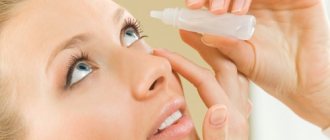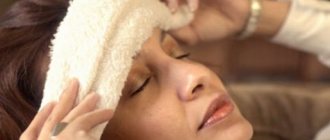In Russia, the attitude towards the bathhouse is traditionally positive. It is considered a place of healing, healing from all diseases, and removal of toxins. And this is true, although presented somewhat one-sidedly, since, in addition to its healing effects, the bathhouse can cause malaise, a feeling of weakness, and a headache. You can eliminate the consequences of visiting a bathhouse quite easily. It is necessary to have a clear understanding of the causes and consequences of illness, to understand why you have a headache after a bath and how to deal with it. The question concerns many, and not only older people, but also very young people who like to take a steam bath.
- 2 Why do you have a headache after a bath?
- 3 How to get rid of headaches
3.1 Traditional methods
- 3.2 Folk remedies
General physical condition of a novice steamer
You should not particularly rely on your youth and external strong condition if you have not previously accustomed your body to a bath. You need to get used to the bath gradually, without overloading the body with an excessively long stay in the steam room. Tobacco and alcohol are not “friends” in the bathhouse ! From the history of the bathhouse it is clear that the steam room is a huge physical activity for your body, if it is weakened in advance by alcohol, nicotine, physical fatigue from previous work, then it is better to refuse this pleasure, since the bathhouse will not bring you any benefit, but it will cause harm - quite possibly.
How to protect your immune system and recover from COVID-19?
Kamila Tuychieva
Head of the reception department of the K+31 clinic, general practitioner
– In the spring, many people notice a loss of strength and fatigue. As a rule, this is due to sun deficiency after the winter months and a lack of vitamins. As a rule, proper nutrition, vitamin complexes according to indications, breathing practices, moderate physical activity and good sleep help strengthen the immune system in this case.
It is more difficult for those who have recently suffered a coronavirus infection, which affects many vital organs and systems. Unfortunately, these are not only the lungs, but also the brain, cardiovascular, central nervous system, etc. Therefore, doctors often identify post-Covid symptoms such as asthenia, anxiety, muscle pain, muscle weakness, hair loss and others .
In each individual case, these symptoms vary in duration and severity. It all depends on how the disease progressed, how the person eats, what kind of immunity he has, and whether he leads an active or passive lifestyle. Each specific patient who has recovered from COVID-19 and has post-Covid symptoms is given certain recommendations from doctors for rehabilitation after coronavirus. The doctor will also recommend vitamins after Covid. Recovery from coronavirus occurs individually, but there are several universal recommendations on how to recover from coronavirus as an adult.
Recommendations for recovery from COVID-19
Asthenia
COVID-19, affecting the central nervous system, also causes asthenia, a condition accompanied by weakness, lethargy, and general malaise. Those who have recovered from coronavirus infection in severe and moderate form require mandatory comprehensive rehabilitation under the supervision of experienced specialists. One of the components of this rehabilitation is therapeutic exercises, which help with muscle pain, muscle weakness, and also stimulate respiratory function.
Anxiety and irritability
After treatment, feelings of anxiety, irritability, aggression or depression may persist. In this case, you should seek the help of a qualified psychologist, especially if the changes affect the quality of life and interaction with others.
Hair loss
The transferred coronavirus can also provoke the occurrence of so-called diffuse alopecia - this is when uniform hair loss is observed. In severe cases, rapid loss occurs, and in milder cases, with greater frequency than usual. The exact data still varies, but, according to some experts, hair follicles do not die, but only fall asleep, so it is possible to restore hair thickness if you consult a qualified doctor who will prescribe the correct treatment.
How to boost immunity after coronavirus?
COVID-19 is far from the only viral disease that requires long-term recovery. For example, rehabilitation after infectious mononucleosis, herpes viral infections takes a long time, even severe forms of habitual sore throat, influenza or ARVI sometimes leave unpleasant consequences. Moreover, long-term recovery after coronavirus is usually associated not only with the virus itself, but also with the individual immunological characteristics of the body.
To strengthen the immune system in the spring, we can recommend measures that are aimed at the general rehabilitation of the body. But before doing anything, it is advisable to consult with your doctor.
For those who have recently suffered from coronavirus, such a consultation is necessary, because a specialist will select an individual rehabilitation program and tell you what vitamins to take after Covid. If the coronavirus infection is severe, comprehensive medical care may be required with the involvement of highly specialized specialists - a cardiologist, pulmonologist and others.
Balanced diet
- It is advisable to exclude sweets, confectionery, and yeast products. Replace baked goods made from premium flour with bread made from durum wheat and whole grains.
- It is useful to eat sprouted grains - they are a storehouse of nutrients.
- It is recommended to replace dairy products (milk and cottage cheese) with lactose-free products during the recovery period; you can drink plant-based milk. This is explained by the fact that coronavirus infection usually affects older people. As you age, your body has a harder time digesting dairy products because the older you are, the less enzymes you can produce that are needed to digest lactose. In addition, after an illness, the human body is weakened, so it does not need extra stress on the digestive system.
7 myths about milk and which of them are true? Read HERE
.
- Meat, poultry, fish. Remember that white meats (rabbit, turkey breast) are better digestible than red ones. If you are not allergic, eat fish. Use green vegetables as a side dish.
- Vegetables. Limit vegetables from the nightshade family (potatoes, eggplants, tomatoes).
- Include foods rich in vitamins C and D in your menu. Vitamin D during coronavirus is a powerful immunoregulator, and C can strengthen the barrier function of the respiratory system. Oranges, black currants, and cranberries are rich in vitamin C. Vitamin D can be obtained from appropriate dietary supplements - up to 50 micrograms of vitamin D per day is required. Vitamins are a good way to restore the body after a mild form of coronavirus.
How to take vitamin D correctly - HERE
.
- Coffee can cause an allergic reaction; it is recommended to replace it with chicory, fireweed, green or black tea.
The main principle of nutrition during the recovery period after Covid is to leave the table with a slight feeling of hunger. In addition, try to eat often (5-6 times a day) and in small portions. Don't eat at night! The fact is that the intestinal immunity “switches on” in the evening and at night, and digestive enzymes are most active in the morning.
Take care of restoring intestinal microflora. Antibiotics can also be used in the treatment of coronavirus infection; the intestinal microflora suffers from this. Therefore, it is important to correct intestinal dysbiosis with probiotics and prebiotics (plant fibers).
Physical activity
The simplest and most accessible type of physical activity for most is daily walks. Start with half-hour leisurely walks. Then gradually increase the time and pace of walking. It also wouldn’t hurt to ask your doctor to choose a set of exercises for you that you can do at home if the weather outside is not very good.
Unsatisfactory conditions in the steam room
The bathhouse itself, if not equipped correctly, can cause your illness: lack of oxygen - the result of poor ventilation, harmful fumes from inappropriate stones, carbon monoxide from a stove closed at the wrong time, individual intolerance to certain types of herbs and plants (in infusions or brooms), aromatic oils and other. To get rid of headaches due to these reasons once and for all, refurbish your bathhouse, get rid of allergens, replace the composition of brooms or decoctions.
How to get rid of headaches
Having dealt with the possible causes of headaches, we will find out how to get rid of them. The problem that has arisen must be solved quickly, but without fuss and haste. First of all, you need to act calmly and not try to stop the pain with one movement. The human body is a very inert system; sudden impacts on it do not act at all as we would like. Often, when feeling unwell, people try to run outside to get some fresh air. This should not be done, since sudden movements combined with temperature changes will only intensify the pain. It is recommended to lie down on a bench in the dressing room or rest room, with a folded sheet or something similar under your feet. Alternatively, you can simply raise your legs or rest them on the wall. Usually after 10 or 20 minutes the pain subsides, but you should consult a doctor in any case. It is advisable to measure blood pressure, this will help narrow down the possible causes of the attack.
Traditional methods
You can use any method if the cause of the headache is known. In some cases, specific symptoms help determine it. Thus, with carbon monoxide poisoning, a feeling of nausea and ringing in the ears appears (signs of a sharp drop in pressure). In this situation, it is recommended to drink mineral water with lemon (still water), and then lie down in a ventilated room. This helps relieve pain.
Effective means are freshly squeezed juices (fresh juices) from strawberries, lingonberries, and viburnum. To enhance the result, you can take a couple of paracetamol tablets. There are rarely juices and paracetamol in the bathhouse, but an experienced person will stock up on them in advance, just in case.
It is not recommended to drink ordinary water in the bathhouse. It is actively excreted from the body, washing away microelements, in particular sodium. You should drink mineral water or sports isotonic drinks.
If you want to know which teas are best to drink in a bathhouse, we recommend reading the article /banshikam/kakoy-chay-pyut-v-bane.html
Folk remedies
For as many centuries as people have been using baths, they have been struggling with the headaches that arise when visiting them. Popular remedies are decoctions of chamomile or St. John's wort, and elderberry infusion.
Pour one teaspoon of chamomile inflorescences into a glass, pour boiling water over them, leave for 30 minutes
There is also a more exotic, but very effective method of aromatherapy. You will need a mixture of mint, orange and chamomile essential oils in a ratio of 5:2:2. A few drops of this mixture are diluted in water, which is poured onto the heater in the steam room. When inhaling the resulting vapor, the pain goes away very quickly. The method is quite specific, requiring preparation and the availability of the necessary ingredients. The owner of the bathhouse should take care of preparing the composition in advance so that, if necessary, he can use it without wasting time.
In addition, there is the simplest folk method - take the victim out of the bathhouse into fresh air and let him lie quietly for a while so that the pressure stabilizes. This option is the most common, has no side effects and is always possible. At the same time, the person’s condition should be monitored in order to urgently call a doctor if necessary.
Dangerous myths about the bathhouse
There are several misconceptions about the bath that are best not to be believed:
- High temperature in the bath is good . This is the case when intuition deceives. Everyone knows that when the temperature rises, a person sweats, and the removal of toxins through sweat is activated. But this only happens at a temperature of about 60°. In extreme heat, sweating is significantly reduced. The body perceives extreme temperatures as a potential danger, and the sebaceous glands no longer work as actively. It should really be hot in the bathhouse, but not so hot that it becomes dark in the eyes and makes it difficult to breathe;
- It's better to take a steam bath before bed . On the contrary, by going to the bathhouse in the evening, a person runs the risk of insomnia. This is due to the fact that processes in the body accelerate, just like after good physical exercise;
- After the bath you need to drink cold water . Cool water will only bring a temporary pleasant feeling. In fact, water at room temperature is better absorbed. After all, cold food quenches thirst worse; it needs time to warm up in the stomach.
Tips for visiting the bathhouse
For bath procedures to be beneficial, you need to follow simple tips :
- Maintaining moderation . Sauna steam is beneficial, but only if a person enjoys it no more than twice a week;
- to brew herbal tea in the waiting room in advance . It will perfectly replenish the fluid deficiency after a bath;
- Do not take a steam bath if you feel unwell . Some people mistake steam for a universal healing remedy that will quickly relieve ailments or speed up recovery from a cold. In fact, when visiting a bathhouse, almost all body processes are accelerated, from blood flow to metabolism. This is only useful in a healthy state. When a person is sick or exhausted after a day of work, such shocks will only harm the body;
- Gradually warm up the body . Starting to steam right away is a bad idea. Let the body get used to the new conditions. First you need to sit on the bottom shelf, where the heat is less.
If your joints hurt after a bath
The appearance of joint pain after bath procedures indicates that a person has problems with the musculoskeletal system . He may not even know about them, since the disease is at an early stage.
For example, a person performs normal movements without noticeable discomfort. But as soon as the hot steam began to affect the joints and changed the blood flow in them, the dormant chronic disease worsened.
A person with healthy joints and ligaments will only experience benefits from a bath. This is due to the following points:
- Heat increases blood circulation, so the structure of the joints is better saturated with oxygen. Hot steam also makes joints more elastic, which is why after a bath a person stretches or warms up with special pleasure;
- Toxic substances are removed;
- The load and feeling of heaviness are relieved from the muscles.
Symptoms of cold rhinitis
Symptoms of cold rhinitis resemble allergic rhinitis, but do not appear due to contact with allergens, but due to exposure to cold.
Main manifestations 1:
- bouts of sneezing when exposed to cold;
- severe nasal congestion;
- copious secretion of mucus when blowing your nose;
- lacrimation and swelling of the eyes (in some cases).
When exposure to cold stops, symptoms gradually disappear. With a mild course, the disease can only bring household inconvenience.











